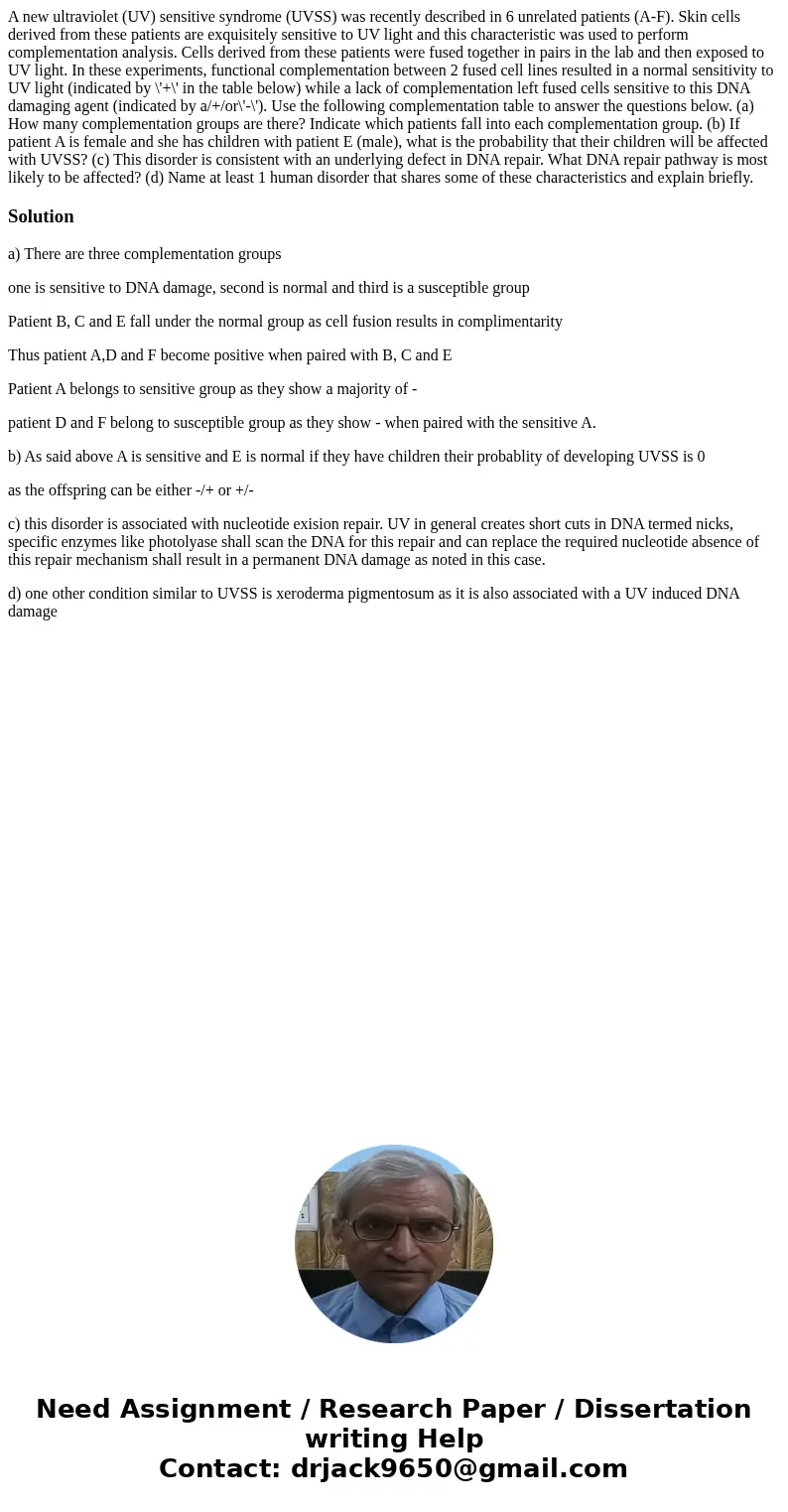A new ultraviolet (UV) sensitive syndrome (UVSS) was recently described in 6 unrelated patients (A-F). Skin cells derived from these patients are exquisitely sensitive to UV light and this characteristic was used to perform complementation analysis. Cells derived from these patients were fused together in pairs in the lab and then exposed to UV light. In these experiments, functional complementation between 2 fused cell lines resulted in a normal sensitivity to UV light (indicated by \'+\' in the table below) while a lack of complementation left fused cells sensitive to this DNA damaging agent (indicated by a/+/or\'-\'). Use the following complementation table to answer the questions below. (a) How many complementation groups are there? Indicate which patients fall into each complementation group. (b) If patient A is female and she has children with patient E (male), what is the probability that their children will be affected with UVSS? (c) This disorder is consistent with an underlying defect in DNA repair. What DNA repair pathway is most likely to be affected? (d) Name at least 1 human disorder that shares some of these characteristics and explain briefly.
a) There are three complementation groups
one is sensitive to DNA damage, second is normal and third is a susceptible group
Patient B, C and E fall under the normal group as cell fusion results in complimentarity
Thus patient A,D and F become positive when paired with B, C and E
Patient A belongs to sensitive group as they show a majority of -
patient D and F belong to susceptible group as they show - when paired with the sensitive A.
b) As said above A is sensitive and E is normal if they have children their probablity of developing UVSS is 0
as the offspring can be either -/+ or +/-
c) this disorder is associated with nucleotide exision repair. UV in general creates short cuts in DNA termed nicks, specific enzymes like photolyase shall scan the DNA for this repair and can replace the required nucleotide absence of this repair mechanism shall result in a permanent DNA damage as noted in this case.
d) one other condition similar to UVSS is xeroderma pigmentosum as it is also associated with a UV induced DNA damage

 Homework Sourse
Homework Sourse